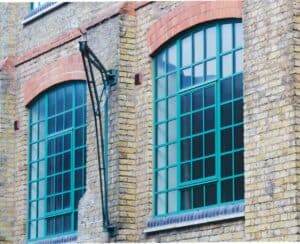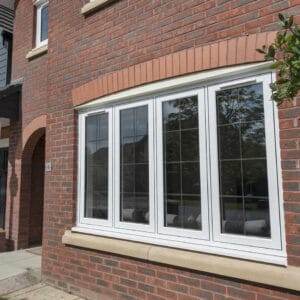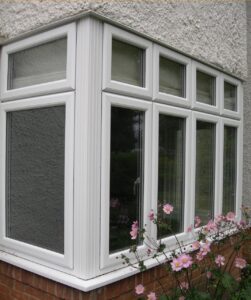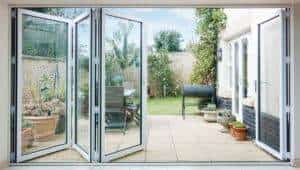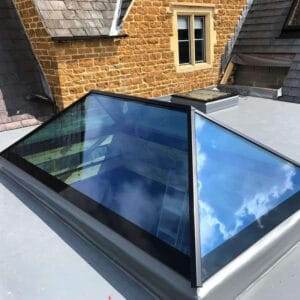As someone who has worked in the construction industry for a number of years, I’ve seen first-hand the importance of understanding building regulations. It’s not just about making sure your project is compliant, it’s about ensuring that your building is safe, sustainable and energy-efficient. In this buying guide, we’ll be focusing on Part L of the Building Regulations – which covers the conservation of fuel and power. Understanding the requirements of Part L is essential if you want to build a property that is both environmentally-friendly and cost-effective in the long run. So, whether you’re a homeowner embarking on a renovation project or a builder starting a new construction, this guide will help you navigate the complexities of Part L, and ensure that your building project meets all the necessary regulations. We’ll cover everything you need to know about Part L and show you how to make the most of its stipulations in a way that is both cost-effective and eco-friendly. From researching building regulations to minimising environmental impact, we’ll provide you with all the tips and advice you need to ensure your project is a success. So without further ado, let’s dive in and start exploring Part L.
Before starting any project, it’s important to research your local building regulations. This will help ensure your project meets the current requirements and that all the necessary permits have been obtained.
To get started, check with your local building or planning department. They should be able to provide you with information about what permits you need and what regulations your project must adhere to. Make sure to ask if there are any special restrictions that apply to your project.
It’s also important to check with your homeowners’ association or other governing body, if applicable, to make sure that your project complies with their rules.
Once you’ve done your research, you can begin the project with confidence. Knowing that you’re following the proper regulations will help alleviate any stress and allow you to focus on the task at hand.
When in doubt, it’s always best to consult with an expert. A qualified contractor can help answer any questions you might have and make sure that your project meets all the necessary requirements.
No matter what type of project you’re undertaking, researching your local building regulations is an important part of the process. By taking the time to make sure you’re following the correct guidelines, you’ll be able to complete your project safely and successfully.
Part L of the Building Regulations covers conservation of fuel and power.
If you’re researching building regulations for a home improvement project, I recommend you pay extra attention to Part L. Part L of the Building Regulations covers conservation of fuel and power. This means that you’ll need to think about the energy efficiency of your building materials and the energy efficiency of the building itself. Here are a few tips to follow when considering the energy efficiency of a building project:
1. Choose energy efficient materials. Look for high-efficiency windows, insulation, and HVAC systems that meet or exceed the requirements set out by Part L.
2. Consider the building’s orientation. Make sure the building is situated in a way that takes advantage of natural light and ventilation to reduce the need for artificial lighting and heating.
3. Consider the use of renewable energy sources. Think about installing solar panels or a wind turbine on the property to reduce the need for non-renewable energy sources.
By following these tips, you can make sure that your building project meets the requirements of Part L and is as energy efficient as possible. Doing so will help keep your energy costs down and reduce your carbon footprint.
Make sure you understand the scope of Part L and how it relates to your project.
When I first started planning my home renovation project, I had no idea what Part L was or how it related to my project. It wasn’t until I started researching and speaking with professionals that I realized how important it was to understand the scope of Part L before making any decisions.
Part L is a section of the Building Regulations that outlines the requirements for energy efficiency in buildings. This includes everything from insulation and heating systems to lighting and ventilation. Understanding the scope of Part L is crucial because it can affect the design and cost of your project.
For example, if your project involves replacing windows, you’ll need to ensure that they meet the minimum energy efficiency requirements set by Part L. This may mean spending more money on high-quality windows, but it will also save you money in the long run on energy bills.
Another key factor to consider is the impact of Part L on the overall energy performance of your home. By following the regulations set by Part L, you can significantly reduce your carbon footprint and contribute to a more sustainable future.
In summary, before embarking on any home renovation project, it’s essential to understand the scope of Part L and how it relates to your project. By doing so, you can ensure that your project meets energy efficiency requirements, saves you money in the long run, and helps to create a more sustainable future.
Consider the impact your project will have on the environment and how to minimise the energy use.
If you’re considering a project that could have an impact on the environment, it’s essential to factor in energy use. When you think about the energy use of a project, you need to consider two main areas: energy production and energy consumption.
When it comes to energy production, it’s important to think about how the project will generate energy. If you’re using electricity, ask yourself if renewable sources like solar or wind power are available. If so, these are often a better choice than traditional energy sources like coal or gas.
Then there’s energy consumption. This is all about looking at the ways in which the project will use energy. Think about the equipment you’ll need and whether it has a high energy rating. Also consider the ways you can reduce energy consumption. For example, you could use energy-efficient lights or use natural light whenever possible.
Finally, consider the potential for energy recycling or reusing. If you can find ways to reuse or recycle energy, it can help to reduce your overall energy consumption.
By taking these steps, you can help to minimise the energy use of your project and reduce its impact on the environment. It’s a small step, but it can make a big difference in the long run.
Consider the long term cost savings of using energy efficient building materials and techniques.
When I was renovating my home, I quickly became aware of the importance of energy efficiency. Not only is it better for the environment, but it also made financial sense. That’s why I strongly believe that people should consider the long-term cost savings of using energy efficient building materials and techniques, when renovating or building a house.
Firstly, using energy efficient materials and techniques can greatly reduce energy bills over time. For example, insulated windows and doors prevent heat from escaping during the colder months, keeping energy costs down. Similarly, using LED light bulbs – which use 75% less energy than traditional incandescent bulbs – can save hundreds of dollars a year in energy bills.
Secondly, energy efficiency can increase the value of your property. Not only are energy efficient homes more attractive to potential buyers, but they also have a higher resale value. This means that making energy efficient improvements to your home can also make it more valuable in the long run.
Lastly, energy efficiency is an investment in the future. Converting to renewable energy sources such as solar panels is becoming increasingly cost-effective, and investing now can lead to significant cost savings in the future.
when considering building or renovating a house, it’s important to weigh the long-term cost savings of using energy efficient materials and techniques. Not only will it save money on energy bills, but it can also increase the overall value of the property and provide a more sustainable future.
Conclusion
Understanding Building regulations is crucial for any homeowner or builder looking to undertake a construction project. Researching your local building regulations will ensure that your project meets the current requirements and avoids any unwanted consequences. Part L of the Building Regulations focuses on the conservation of fuel and power, so it’s essential to understand the scope of this section and its implications for your project. Minimizing energy usage and considering the environmental impact of your project is crucial to achieving an energy-efficient building. Ultimately, understanding Building regulations can save homeowners and builders money, time, and energy, while simultaneously contributing to a more sustainable future for all.

